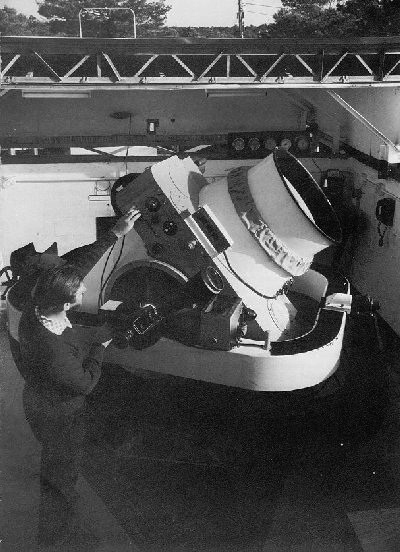|
United States Space Surveillance Network
The United States Space Surveillance Network (SSN) detects, tracks, catalogs and identifies artificial objects orbiting Earth, e.g. active/inactive satellites, spent rocket bodies, or fragmentation debris. The system is the responsibility of United States Space Command and operated by the United States Space Force. Space surveillance accomplishes the following: * Predict when and where a decaying space object will re-enter the Earth's atmosphere; * Prevent a returning space object, which to radar looks like a missile, from triggering a false alarm in missile-attack warning sensors of the U.S. and other countries; * Chart the present position of space objects and plot their anticipated orbital paths; * Detect new artificial objects in space; * Correctly map objects traveling in Earth orbit; * Produce a running catalog of artificial space objects; * Determine ownership of a re-entering space object; * Inform NASA whether or not objects may interfere with the International Space S ... [...More Info...] [...Related Items...] OR: [Wikipedia] [Google] [Baidu] |
Geocentric Orbit
A geocentric orbit or Earth orbit involves any object orbiting Earth, such as the Moon or artificial satellites. In 1997, NASA estimated there were approximately 2,465 artificial satellite payloads orbiting Earth and 6,216 pieces of space debris as tracked by the Goddard Space Flight Center. More than 16,291 objects previously launched have undergone orbital decay and entered Earth's atmosphere. A spacecraft enters orbit when its centripetal acceleration due to gravity is less than or equal to the centrifugal acceleration due to the horizontal component of its velocity. For a low Earth orbit, this velocity is about ; by contrast, the fastest crewed airplane speed ever achieved (excluding speeds achieved by deorbiting spacecraft) was in 1967 by the North American X-15. The energy required to reach Earth orbital velocity at an altitude of is about 36 MJ/kg, which is six times the energy needed merely to climb to the corresponding altitude. Spacecraft with a perigee belo ... [...More Info...] [...Related Items...] OR: [Wikipedia] [Google] [Baidu] |
Air Force Maui Optical Station
The Air Force Maui Optical and Supercomputing observatory is an Air Force Research Laboratory (AFRL) operating location at Haleakala Observatory on Maui, Hawaii, with a twofold mission (). First, it conducts the research and development mission on the Maui Space Surveillance System (MSSS) at the ''Maui Space Surveillance Complex'' (MSSC). Second, it oversees operation of the Maui High Performance Computing Center (MHPCC). AFRL's research and development mission on Maui was formally called Air Force Maui Optical Station (AMOS); the use of the term AMOS has been widespread throughout the technical community for over thirty years and is still used today at many technical conferences. The main-belt asteroid 8721 AMOS is named after the project. Origins Today's observatory was initiated by the Advanced Research Projects Agency (ARPA) in 1961 as the ARPA Midcourse Optical Station (AMOS). It was first proposed by R. Zirkind of ARPA's staff for imaging ballistic missile payload ... [...More Info...] [...Related Items...] OR: [Wikipedia] [Google] [Baidu] |

